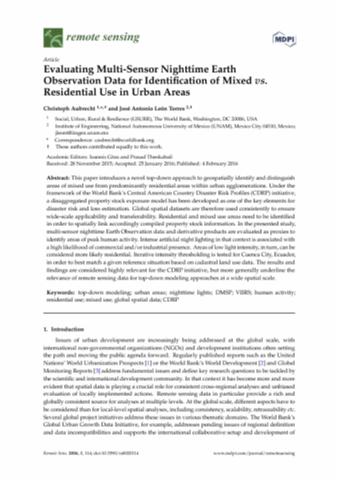The World Bank is a vital source of financial and technical assistance to developing countries around the world. We are not a bank in the ordinary sense but a unique partnership to reduce poverty and support development. The World Bank Group has two ambitious goals: End extreme poverty within a generation and boost shared prosperity.
- To end extreme poverty, the Bank's goal is to decrease the percentage of people living on less than $1.25 a day to no more than 3% by 2030.
- To promote shared prosperity, the goal is to promote income growth of the bottom 40% of the population in each country.
The World Bank Group comprises five institutions managed by their member countries.
The World Bank Group and Land: Working to protect the rights of existing land users and to help secure benefits for smallholder farmers
The World Bank (IBRD and IDA) interacts primarily with governments to increase agricultural productivity, strengthen land tenure policies and improve land governance. More than 90% of the World Bank’s agriculture portfolio focuses on the productivity and access to markets by small holder farmers. Ten percent of our projects focus on the governance of land tenure.
Similarly, investments by the International Finance Corporation (IFC), the World Bank Group’s private sector arm, including those in larger scale enterprises, overwhelmingly support smallholder farmers through improved access to finance, inputs and markets, and as direct suppliers. IFC invests in environmentally and socially sustainable private enterprises in all parts of the value chain (inputs such as irrigation and fertilizers, primary production, processing, transport and storage, traders, and risk management facilities including weather/crop insurance, warehouse financing, etc
For more information, visit the World Bank Group and land and food security (https://www.worldbank.org/en/topic/agriculture/brief/land-and-food-security1
Resources
Displaying 511 - 515 of 4907Policies for Shared Prosperity in Myanmar (English, Burmese မြန်မာဘာသာ)
INTRODUCTION: "The November 8, 2015 elections in Myanmar
marked a historic milestone in the country’s political
and economic transition that began in 2011.
Incoming policy makers are preparing to pick up the
baton and deliver on the people’s strong aspirations for
a harmonious and prosperous Myanmar. In this series
of policy notes, the World Bank Group seeks to promote
dialogue on critical development challenges and
on options for policies and reforms that can contribute
to shared prosperity for the people of Myanmar.
Indigenous Latin America in the
Twenty-First Century
In 2013 the World Bank set itself two
ambitious goals: to end extreme poverty within a generation
and to boost the prosperity of the bottom 40 percent of the
population worldwide. In Latin America, the significance of
both goals cannot be overstated. Indigenous people account
for about 8 percent of the population, but represent 14
percent of the poor and over 17 percent of all Latin
Americans living on less than United States (U.S.) $2.50 a
The Sendai Report
This report argues that the practice of
disaster risk management (DRM) is a defining characteristic
of resilient societies, and should therefore be integrated,
or 'mainstreamed', into all aspects of
development. The report will inform the Development
Committee at the annual meetings 2012, and support
discussion at the Sendai dialogue, a special event
co-organized by the Government of Japan and the World Bank
Evaluating Multi-Sensor Nighttime Earth Observation Data for Identification of Mixed vs. Residential Use in Urban Areas
This paper introduces a novel top-down approach to geospatially identify and distinguish areas of mixed use from predominantly residential areas within urban agglomerations. Under the framework of the World Bank’s Central American Country Disaster Risk Profiles (CDRP) initiative, a disaggregated property stock exposure model has been developed as one of the key elements for disaster risk and loss estimation. Global spatial datasets are therefore used consistently to ensure wide-scale applicability and transferability.
A Detailed Anatomy of Factor Misallocation in India
This paper complements the results of
earlier work on factor misallocation. The paper first
expands the methodology and provides two important
decompositions for the main indices. The main result is that
factor and output misallocation across districts is at least
as important as misallocation within districts. Second, the
paper provides an exploration of the service sector that
complements earlier work on manufacturing. The analysis








